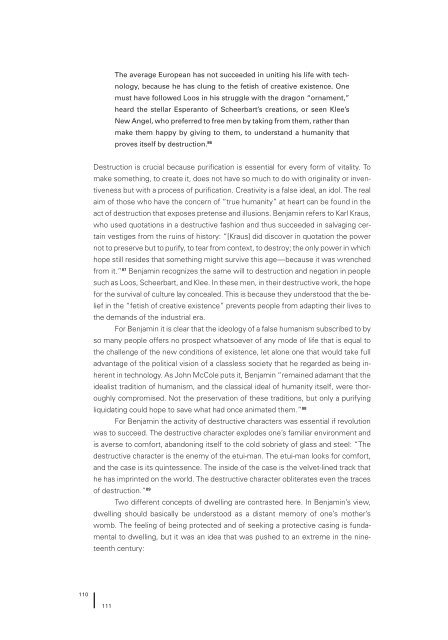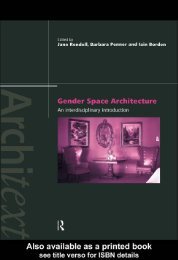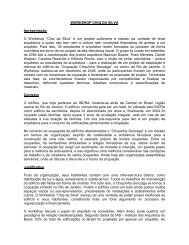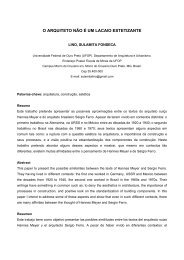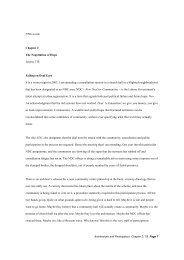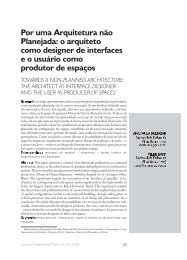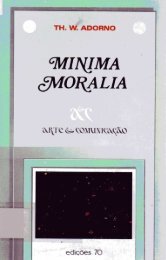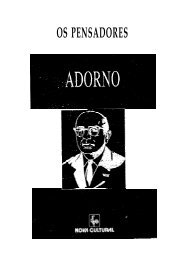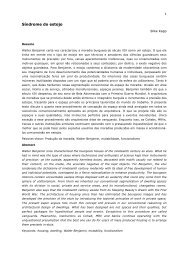Architecture and Modernity : A Critique
Architecture and Modernity : A Critique
Architecture and Modernity : A Critique
You also want an ePaper? Increase the reach of your titles
YUMPU automatically turns print PDFs into web optimized ePapers that Google loves.
110<br />
111<br />
The average European has not succeeded in uniting his life with technology,<br />
because he has clung to the fetish of creative existence. One<br />
must have followed Loos in his struggle with the dragon “ornament,”<br />
heard the stellar Esperanto of Scheerbart’s creations, or seen Klee’s<br />
New Angel, who preferred to free men by taking from them, rather than<br />
make them happy by giving to them, to underst<strong>and</strong> a humanity that<br />
proves itself by destruction. 86<br />
Destruction is crucial because purification is essential for every form of vitality. To<br />
make something, to create it, does not have so much to do with originality or inventiveness<br />
but with a process of purification. Creativity is a false ideal, an idol. The real<br />
aim of those who have the concern of “true humanity” at heart can be found in the<br />
act of destruction that exposes pretense <strong>and</strong> illusions. Benjamin refers to Karl Kraus,<br />
who used quotations in a destructive fashion <strong>and</strong> thus succeeded in salvaging certain<br />
vestiges from the ruins of history: “[Kraus] did discover in quotation the power<br />
not to preserve but to purify, to tear from context, to destroy; the only power in which<br />
hope still resides that something might survive this age—because it was wrenched<br />
from it.” 87 Benjamin recognizes the same will to destruction <strong>and</strong> negation in people<br />
such as Loos, Scheerbart, <strong>and</strong> Klee. In these men, in their destructive work, the hope<br />
for the survival of culture lay concealed. This is because they understood that the belief<br />
in the “fetish of creative existence” prevents people from adapting their lives to<br />
the dem<strong>and</strong>s of the industrial era.<br />
For Benjamin it is clear that the ideology of a false humanism subscribed to by<br />
so many people offers no prospect whatsoever of any mode of life that is equal to<br />
the challenge of the new conditions of existence, let alone one that would take full<br />
advantage of the political vision of a classless society that he regarded as being inherent<br />
in technology. As John McCole puts it, Benjamin “remained adamant that the<br />
idealist tradition of humanism, <strong>and</strong> the classical ideal of humanity itself, were thoroughly<br />
compromised. Not the preservation of these traditions, but only a purifying<br />
liquidating could hope to save what had once animated them.” 88<br />
For Benjamin the activity of destructive characters was essential if revolution<br />
was to succeed. The destructive character explodes one’s familiar environment <strong>and</strong><br />
is averse to comfort, ab<strong>and</strong>oning itself to the cold sobriety of glass <strong>and</strong> steel: “The<br />
destructive character is the enemy of the etui-man. The etui-man looks for comfort,<br />
<strong>and</strong> the case is its quintessence. The inside of the case is the velvet-lined track that<br />
he has imprinted on the world. The destructive character obliterates even the traces<br />
of destruction.” 89<br />
Two different concepts of dwelling are contrasted here. In Benjamin’s view,<br />
dwelling should basically be understood as a distant memory of one’s mother’s<br />
womb. The feeling of being protected <strong>and</strong> of seeking a protective casing is fundamental<br />
to dwelling, but it was an idea that was pushed to an extreme in the nineteenth<br />
century:


